Bodybuilding DVD's
Ronnie Coleman
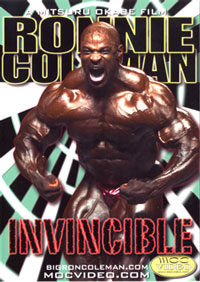
Colossal Workout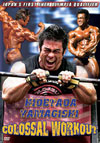
Dennis Wolf
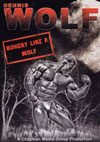
Dorian Yates
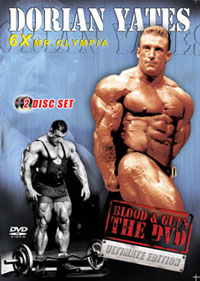
Believe to Achieve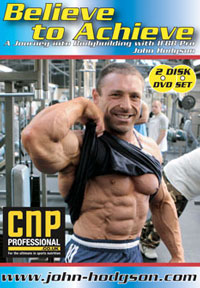
Jay Cutler's house

Hard and Heavy

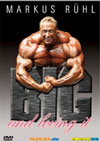


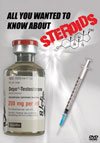
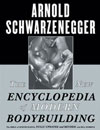
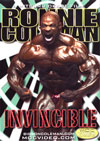
|
Steroids - What do you know
TYPES OF STEROIDS
Anabolic/Androgenic Steroids can be roughly classified into two
types, oral and injectable. When you eat food or consume anything
orally, the great majority of the ingested substances pass through
the liver prior to entering the bloodstream. For this reason,
"injectable" AAS cannot be taken orally because the liver
will deactivate the steroids in this "first pass".
Deactivation in the liver usually involves the addition of one or
more hydroxyl (OH) groups to increase the solubility of the molecule
in water, making excretion in the urine more easily accomplished.
Oral SteroidsOral steroids involve modification of the parent steroid to make it
harder for the liver to degrade the steroid molecules. This
modification is almost always the addition of an alkyl (methyl)
group at the 17 position of the steroid ring. The liver can still
degrade the steroid, but not as effectively as the un-modified
steroid. Therefore, oral steroids make several cycles through the
bloodstream before being excreted. Most oral steroids are, to
various degrees, excreted from the body unchanged
Injectable SteroidsThe injectable Steroids are very effectively degraded in just a single
pass through the liver. If this is so, then how can the injectables
be effective? The answer is called a "depot" (or
reservoir), which allows a regular release of steroid into the
bloodstream. As steroid is removed from the bloodstream by the
liver, more steroid is being released into the bloodstream from the
depot. There are several ways to provide such a reservoir of the
steroid.
SuspensionThe first way is to use pure testosterone (a crystalline solid)
suspended in water. Testosterone has a low solubility in water, and
the crystals slowly dissolve in the watery environment of the tissue
in which it is injected. The dissolved testosterone is carried
throughout the body by the bloodstream. For Testosterone suspension,
the "depot" is the actual physical site where the
injection is made. The crystals do not migrate to other parts of the
body, and the presence of the crystalline testosterone can cause
some pain at the injection site. The testosterone dissolves at a
(relatively) constant rate, and lasts for a few days in the body.
Winstrol suspension is similar.
EstersThe other way to provide a depot of steroid is to use a
water-insoluble form of the steroid that can be converted in the
body to the parent steroid, which has some solubility in water
(bloodstream). Most commonly, the parent molecule is esterified with
an organic acid, and the resulting ester is soluble in oil, but only
very slightly soluble in water. Commonly used organic acid groups
are acetate (C2), propionate (C3), enanthate (C7), decanoate (C10),
and undecylenate (C11). The longer the carbon chain of the acid, the
more oil-soluble the ester, and the longer it takes for the ester to
turn into the parent steroid (de-esterification). A type of enzyme
that is found throughout the body facilitates the de-esterification
reaction to form the parent steroid from the ester. The enzyme
actually catalyzes the reaction in both directions, so it can also
attach an organic acid back onto the parent steroid. So, for
example, testosterone enanthate can actually be turned into
testosterone palmitate. There is some good evidence that steroid
esters are, to some extent, stored in fat cells.
It is commonly believed that esters form a depot of oil/ester that
stays at the injection site. This is not true. While the depot
concept holds true for esters (because they slowly release the
parent steroid over time), the esters actually disperse throughout
the body after injection, prior to (and during) the de-esterification
reaction to form the parent steroid. They do not stay at the
injection site. For example, the ester testosterone enanthate has
been found in tissues throughout the body, including hair samples of
subjects who have injected T200. If a bio-contaminant is introduced
at the time of injection (non-sterile conditions), the body will
attempt to encapsulate the contaminated material, and an abscess
will form. In this case it appears as if the ester has remained at
the injection site. But under normal sterile conditions, the oily
solution will disperse. Injecting too much at one site or injecting
too frequently at one site will not cause an abscess.
Transport of Steroids in the BloodstreamOnce the steroid has been released from the depot (or the oral
steroid has been absorbed from the intestine), it is transported
throughout the body in the bloodstream. Carrier proteins (Albumin
and Sex Hormone binding Globulin) bind about 98% of testosterone
under natural conditions. Thus, only 2% of the hormone is free to
carry out its actions. When exogenous steroid is present, the level
of free steroid is much higher than 2%. Bear in mind that the
hormone is not permanently bound to the some of the proteins, but is
constantly binding and un-binding from the protein. At any given
time, about 2% of the hormone is un-bound in the natural state. So,
if the 2% unbound hormone were to magically disappear, then the
proteins would release more hormone such that 2% (of the remaining
total) would come unbound. The bloodstream is the mechanism by which
the hormones reach their target tissues (muscle).
Action of Steroids
Androgen Receptor ActivationOnce a free molecule of steroid reaches the muscle cell, it diffuses
into the cell. The diffusion can be with or without
transport-protein assistance. Once in the cell, the AAS is makes its
way to the cell nucleus where it can bind with an androgen receptor
(AR), and activate the receptor. Two of these activated receptor
complexes join together to form the androgen response element (ARE).
The ARE interacts with DNA in the nucleus, and increases the
transcription of certain genes (such as muscle protein genes). As
long as the ARE is intact, it accelerates gene transcription.
Remember, though, that the AAS and the receptor are in a state of
flux (binding and un-binding), just like with the Carrier proteins.
So the ARE can be deactivated just by losing one of the two AAS that
are bound to the AR's. This equilibrium situation explains why 1
gram per week testosterone is more effective than 1/2 gram per week,
even though 1/2 gram appears to be more than enough to saturate all
the AR's in the body. The higher concentration makes it more likely
that the receptors will be occupied by an AAS, and the ARE will be
intact for a longer period of time, on average.
Other Actions
Activation of the androgen receptor is a key mechanism in the action
of AAS. However, this mechanism by itself does not explain the
differences between steroids (i.e., nandrolone activates the AR
better than testosterone, but is not as good of a mass-building
product). Other actions involve primarily the central nervous
system, and involve actions such as motor activation (muscle
coordination) and mood (i.e., aggressiveness). The mechanism by
which AAS effect these actions is not well understood at this time.
Another effect occurs in the liver, where some steroids cause the
release of certain Growth Factors. The different actions of the
different AAS explains why a stack of two different types of AAS is
often better than one by itself.
Elimination of Steroids
The liver is a primary route to deactivation of steroids, the
chemical structure is changed here to make the steroid more soluble
in water for excretion through the kidneys. A good portion of many
steroids also are excreted as-is, without any alteration by the
liver, or by formation of the sulphate, which is more water soluble.
Many in the medical community have believed that AAS cause liver
damage because levels of certain enzymes (AST and ALT) are elevated
when steroids are used. Elevated levels of these enzymes are seen in
patients with liver damage from other causes, so the conclusion is
that AAS must cause liver damage because these enzymes are elevated.
Recent work, however, has shown that a true marker of liver damage,
GGT, remains unchanged when some AAS are used, and now it is
questioned whether AAS are really damaging to the liver (the 17
alpha-alkylated AAS do cause damage in some rare cases, and this
damage is reversible upon cessation of steroid use). The same
thought processes were used to claim kidney damage, but that is
unlikely as well.
The Causes of Inhibition
Elevated hormone levels, in general, will cause inhibition of
natural testosterone production. What then besides estrogen can
cause inhibition? DHT, which does not aromatize, has been
extensively shown to cause inhibition of testosterone production.
Androgen alone, then, is sufficient to cause inhibition. In Jim???s
case, androgen use was moderately heavy, and androgen alone would
seem the cause of the inhibition.
Progesterone is another hormone that can cause inhibition, when used
long-term. Paradoxically, in the short term it can be stimulatory.
Other relevant factors include beta agonists, opiates, melatonin,
prolactin, and probably other compounds. With the exception of beta
agonists (e.g. ephedrine and Clenbuterol) and opiates (natural
endorphins on the one hand being inhibitory, and Nubain blocking
such inhibition) manipulation of these would not seem useful in
bodybuilding.
The Hypothalamic Pituitary Testicular Axis (HPTA)To understand inhibition of testosterone production, we need to know
first how it is produced and how production is controlled. The broad
general picture is that the hypothalamus receives a variety of
inputs, for example, levels of various hormones, and decides whether
or not more sex hormones should be produced. If the inputs are high,
for example, high estrogen or high androgen or both, then it decides
that little or no sex hormones should now be produced, but if all
inputs are low, then it may decide that more sex hormones should be
produced. It seems that the hypothalamus doesn???t respond only to
current hormone levels, but also to the past history of hormone
levels.
The hypothalamus itself cannot produce any sex hormones ??? instead
it produces LHRH, or luteinizing hormone (LH) releasing hormone,
also called GnRH (gonadotropin releasing hormone.) This then
stimulates the pituitary gland.
The pituitary uses the amount of LHRH as one of its signals in
deciding how much LH it should produce. Proper response depends on
having sufficient receptors for LHRH. These receptors must be
activated for LH to be produced. The pituitary also uses sex hormone
levels, both current and the past history, in deciding how much LH
to produce. Some aspects of the pituitary???s behavior are peculiar.
For example, too much LHRH results in the pituitary downregulating
LHRH receptors, with the result that very high LHRH production,
which one would think should result in high testosterone production,
actually lowers testosterone production. Another oddity is that
while high estrogen levels inhibit the pituitary, still some
estrogen is required to maintain a high number of LHRH receptors. So
both very low and high levels of estrogen can inhibit LH production.
LH produced by the pituitary then stimulates the testicles to
produce testosterone. Here, the amount of LH is the main factor, and
high levels of sex hormones do not seem to cause inhibition at this
level.
Inhibition From AAS Cycles
Because high androgen levels sustained around the clock will cause
inhibition, traditional cycles simply cannot avoid inhibition of LH
production while on cycle. There are three ways to avoid it:
??? Avoid having high androgen levels around the clock. This
can be done, for example, by using oral AAS only in the morning,
with the last dose being approximately at noontime. Even 100 mg/day
Dianabol can be used in this fashion with little inhibition. The
problem with this approach is that gains are not very good compared
to what is seen when high androgen levels are sustained around the
clock.
??? Use an amount and kind of AAS that is low enough to avoid
much inhibition. Primobolan at 200-400 mg/week may achieve this
effect. Again, gains will be compromised compared to a more
substantial cycle. Testosterone esters and Deca are substantially
inhibitory even at 100 mg/week so using a low dose of these drugs
will simply result in both inhibition and poor gains.
??? In principle, one could use an anti androgen, but this would
totally defeat the purpose of the cycle.
Where AAS doses are sufficient for good gains, an interesting
pattern is seen. For the first two weeks of the cycle, only the
hypothalamus is inhibited, and it produces much less LHRH as a
result of the high levels of sex hormones it senses. The pituitary
is not inhibited at all: in fact, it is actually sensitized, and
will respond to LHRH (if any is provided) even more so than normally.
After two weeks however, the pituitary also becomes inhibited, and
even if LHRH is provided, the pituitary will produce little or no LH.
This then is a deeper type of inhibition. After this point, there
seems to be no definite further "switching point" where
inhibition again becomes deeper and harder to reverse. As a general
rule, I would say that there seems to be little difference between
using AAS for 3 weeks vs. 8 weeks: recovery is about the same either
way. Between 8 and 12 weeks, it becomes more and more likely that
recovery will be difficult and slow, though even at 12 weeks it is
common for recovery to not be too problematic, taking only a few
weeks. Steroid Cycles past 12 weeks seem much more likely to cause
substantial problems with recovery. In the hundreds of consultations
I have done for people with recovery problems, very few (I can
recall two) were for very short cycles such as 6 weeks, while most
were for usages of 12 weeks straight or more.
Cytadren This drug can be used to reduce conversion of
testosterone, Dianabol, and Equipoise (not an exclusive list of
aromatizable AAS, but the main ones) to estrogen. Some feel that
when estrogen levels are kept under control during the cycle,
recovery is faster after the cycle is over, though that is not
proven. It is a good idea though. And if testosterone esters were
used prior to ending the cycle, some levels of these will remain for
weeks, and continued use of Cytadren will help prevent conversion to
estrogen, and thereby reduce inhibition. The best dosing pattern, in
my opinion, is to take ˝ tab (125 mg) on arising, and then
Ľ tab at six and 12 hours later. Use of more Cytadren than
this, or a different pattern, may lead to an adverse effect on
cortisol production, with subsequent cortisol rebound after
discontinuing the drug. Some individuals suffer some lethargy
(feeling of tiredness and laziness, or sleepiness) from Cytadren,
but that is uncommon at this dose.
Arimidex
This accomplishes the same purposes as Cytadren but
without the possible side effects mentioned above. It is however far
more expensive. A typical dose is 1 mg./day. The timing of the
dosage does not matter, since the drug has a long half-life.
Clomid
After a cycle is over, Clomid at 50 mg/day is usually very
effective in restoring natural testosterone production. It acts by
blocking estrogen receptors at the hypothalamus and pituitary. If
androgen levels are not elevated, this is enough to cause production
of at least normal amounts of LH, or often more LH than normal.
During the cycle Clomid cannot prevent inhibition, though some think
using it during the cycle will allow a faster recovery afterwards.
That is not proven though. If nothing else, though, it is useful as
an antigyno/antibloating agent during the cycle.
Nolvadex
This works in the same manner as Clomid, but not
nearly so well with regard to reversing inhibition. It is better to
use this only as an anti-gyno/antibloating agent, if at all. If
Clomid is used, there is no need for Nolvadex.
HCG This does nothing with regard to inhibition of the
hypothalamus and pituitary. Rather it acts like LH, and causes the
testicles to produce testosterone just as if LH were present. It is
useful then for avoiding testicular atrophy during the cycle. The
best dosing method is to use small amounts frequently: 500 IU per
day is sufficient, and 1000 IU may optionally be used. The amount
may be given as a single daily dose or divided into two doses.
Administration may be intramuscular or subcutaneous. More is not
better: too much HCG can result in downregulation of the LH
receptors in the testes, and is therefore counterproductive.
Overdosing of HCG can also result in gynecomastia.
Ephedrine / Clenbuterol
It is possible that the beta agonist
activities of these drugs may assist in recovery. Personally, I do
recommend the use of ephedrine post-cycle to those who can use it.
Clenbuterol has the same effect but acts around the clock, having a
longer half life, and allowing a higher effective dose (amount times
potency) due to having less relative effect on beta receptors in the
heart. I am not sure that Clenbuterol has any better effect with
regard to recovery though.
Oral AAS
These do not assist recovery of natural
testosterone production, but if used only in the morning, can help
sustain muscle mass while in the recovery phase, with little or no
adverse effect on recovery.
If you use an article from this site, Please consider a link back to WWW.BASSKILLERONLINE.COM if possible.. Thank you kindly
Come join us at the hottest Bodybuilding steroid board around
Free to join!!!!
World class bodybuilding


|
|




